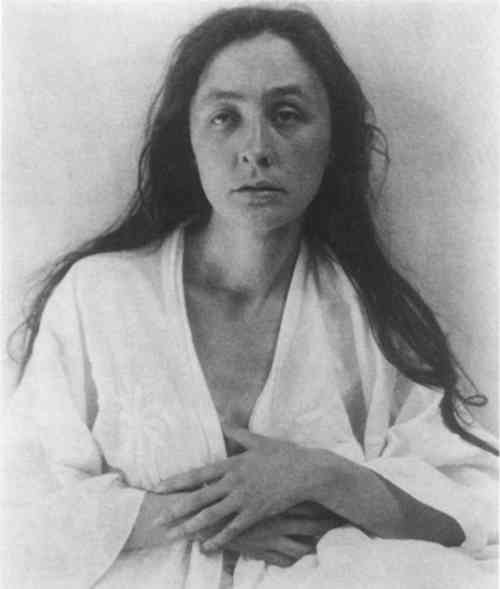ALFRED STIEGLITZ'S PALLADIUM PHOTOGRAPHS AND THEIR TREATMENT BY EDWARD STEICHENDOUGLAS G. SEVERSON
1 INTRODUCTIONThe photographs of Alfred Stieglitz have inspired, mystified, provoked, and illuminated viewers for more than a century. Stieglitz was born during the Civil War, but his images and ideas are often central to discussions of the most contemporary photography (fig. 1). Stieglitz's portraits of his wife, Georgia O'Keeffe, made over a period of nearly 20 years, are perhaps his most celebrated and timeless images (fig. 2). The prints were executed with a variety of photographic techniques and styles. A hand on an automobile may be rendered in silver for greater contrast, while a softly lit neck or torso is printed with platinum salts to emphasize the subtlety of tonal gradation. Stieglitz's use of the palladium process, by itself or in combination with platinum, is the primary focus of this investigation.
The vast majority of Stieglitz's palladium prints were treated shortly after his death by his fellow photographer Edward Steichen. The exact nature of this treatment is uncertain. The following passage from a letter written by Georgia O'Keeffe in January 1950 (O'Keeffe 1950) to Daniel Catton Rich, director of the Art Institute of Chicago, is the most explicit reference yet found to the procedure. It refers to untreated prints that were already in the Art Institute pending acquisition:
Decades later, this mysterious treatment may be having an adverse impact on these photographs. It is hoped that a discussion of the changes that have occurred in these palladium prints will contribute to our understanding of the stability of these objects and enable us to make better-informed decisions about their storage and exhibition. |

